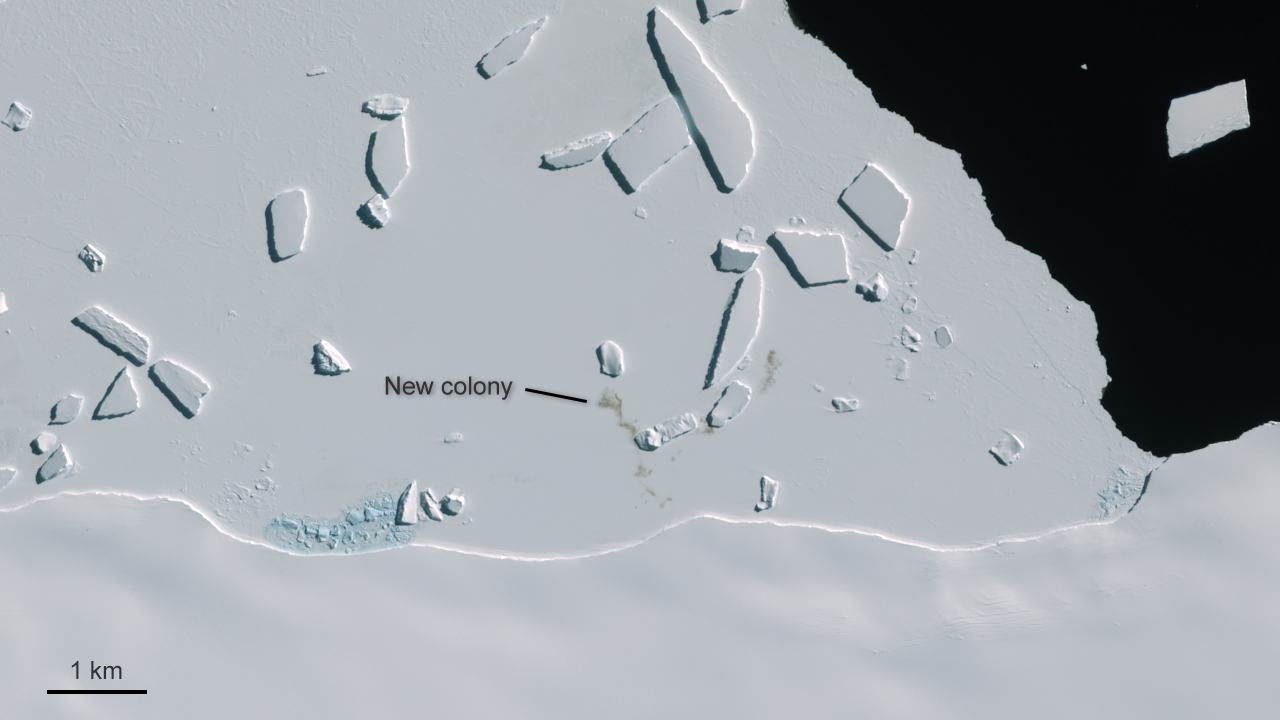Spotting penguin poo from space
18 November 2020
What kind of things do we use satellites for? Most people think of observing the weather and communicating around the world… but what about spotting penguin poo?! It sounds like a joke, but this is exactly what scientists have been doing!

A Sentinal-2 satellite, looking down on Earth from space. Copyright: ESA/ATG medialab
Emperor penguins are only found in Antarctica. They are vulnerable to climate change, as warming ocean waters melt the sea ice where they live and breed. So, it is important that we can track how many groups of penguins – called colonies – there are. This is difficult, as the areas in which they live are remote, and temperatures dip to a bitterly cold –50°C, making it hard for scientists to visit. Could finding them from space be the answer?
Individual penguins are too small to show up in satellite images, but photos taken by Sentinel-2A and 2B, which are orbiting Earth, have revealed large brown patches of ice in areas around Antarctica. Scientists realised that this is where the ice has been stained by penguin poo (the official name of which is guano)!

Can you see the brown patches? They are giant stains on the ice caused by penguin poo! Copyright: contains modified Copernicus Sentinel data (2016), processed by ESA, CC BY-SA 3.0 IGO
Many of these brown patches matched up with penguin colonies we already knew about, but this poo-spotting technique has revealed 11 new colonies! We now know of 61 penguin colonies around Antarctica. These new colonies bring the known number of Emperor penguins to just over half a million, boosting the total by up to 10%.
While this is a fantastic finding, it is not all good news. These penguins are living in areas likely to be affected by climate change, meaning we need to watch them closely and do all we can to protect them. Sentinel-2A and 2B are perfect for this job, as their mission is to observe the health and behaviour of our planet – and how it is continuously affected by climate change.
Cool fact: Scientists were surprised to find that some of the new colonies live on sea ice formed around icebergs grounded in shallow water – behaviour not seen before in Emperor penguins!






